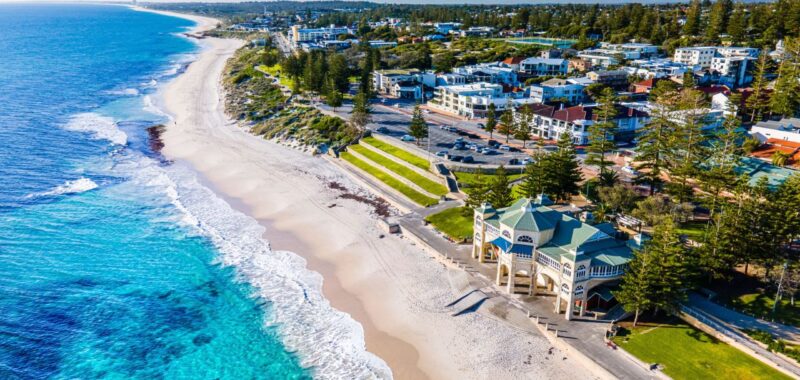Australia’s property market has reached a new milestone, with the total value of residential real estate surpassing $11 trillion for the first time, but growth is starting to ease.
CoreLogic Australia Economist Kaytlin Ezzy said that despite this growth, the market is showing signs of cooling.
“While the market remains resilient in many areas, the pace of growth more broadly has clearly decelerated,” Ms Ezzy said.
“Buyers and investors are becoming more cautious, and the current lending environment is leading to more measured purchasing decisions.”
The national home values rose by just 1 per cent in the September quarter, the slowest quarterly increase since March 2023.
The annual growth rate has also slowed to 6.7 per cent from a high of 9.7 per cent earlier in the year.
Perth emerged as the standout performer, with values reaching a new record high and experiencing the highest annual growth of 24.1 per cent.
Sydney, Brisbane, and Adelaide dwelling values also hit record highs, with Brisbane and Adelaide recording annual increases of 14.5 per cent and 14.8 per cent respectively.
However, not all cities fared equally well.
“Melbourne and Hobart recorded quarterly and annual dwelling declines and are -5.1 per cent and -12.5 per cent respectively below their record highs recorded in March 2022,” Ms Ezzy said.
The slowdown in price growth has been attributed to increased listing volumes and more cautious buyer behaviour.
New listing volumes rose 2.1 per cent year-on-year in October, marking the strongest start to the spring selling season since 2021.
“The year-on-year increase in new listing volumes will have contributed to a deceleration in value growth as the market absorbs the additional stock,” Ms Ezzy said.
“The higher rate of sales indicates there’s still solid buyer demand despite changing market conditions.”
Investors have played a significant role in maintaining strong buyer demand, representing 38.6 per cent of new loan commitments, the highest share since 2017.
This comes as national rental growth slows, with rents rising just 0.1 per cent over the quarter, the lowest rate in four years.
Ms Ezzy said that the high investor activity is likely due to a combination of factors, including perceived opportunities for capital gains and tighter rental market conditions driving potential yield growth.
“Along with capital gains, some investors are recognising the potential for long-term rental income growth, even as rental yields compress,” she said.
“The increase in available stock is also providing more opportunities for investors to enter the market, which wasn’t the case during last year’s constrained conditions.”
As the spring selling season progresses, Ms Ezzy said she expects a further slowdown in growth as new listings continue to rise, providing some relief for buyers who have faced intense competition over the past year.

